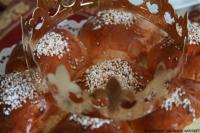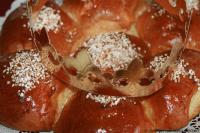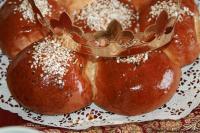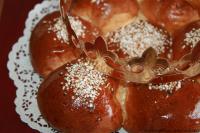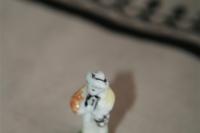Le Fève The tradition of hiding "un fève" (a lucky charm) within the king cake is borrowed from the Roman holiday of Saturnalia, a week-long public festival at the end of the year in which social roles were said to be reversed. During Saturnalia, whoever found the little bean in their cake---"feve" also means "bean"---was honored as the king of the feast, even if he was a slave. As the tradition spread to Christian countries, the English began including both a bean and a pea to crown the King and the Queen of Twelfth Night. The corresponding tradition, where the King or Queen must buy a round of drinks, or next year's king cake, may be responsible for the evolution of the lucky charm from a bean to a ceramic figurine: It is much harder to swallow a figurine and thus avoid the obligation of having to buy drinks. The Galette des Rois, or king cake, is a dessert associated with the Christmas season in European countries and with Mardi Gras in the United States. Its most notable feature is the hidden prize, usually a trinket figurine, in the cake. The person who finds the figurine in his slice of cake is dubbed king for the day and obligated to buy the next king cake. (source: wikipedia)In this album, our two boys found the figurine, therefore dubbed as the kings for the day...
未有评级
无留言
加入留言:
订阅留言

